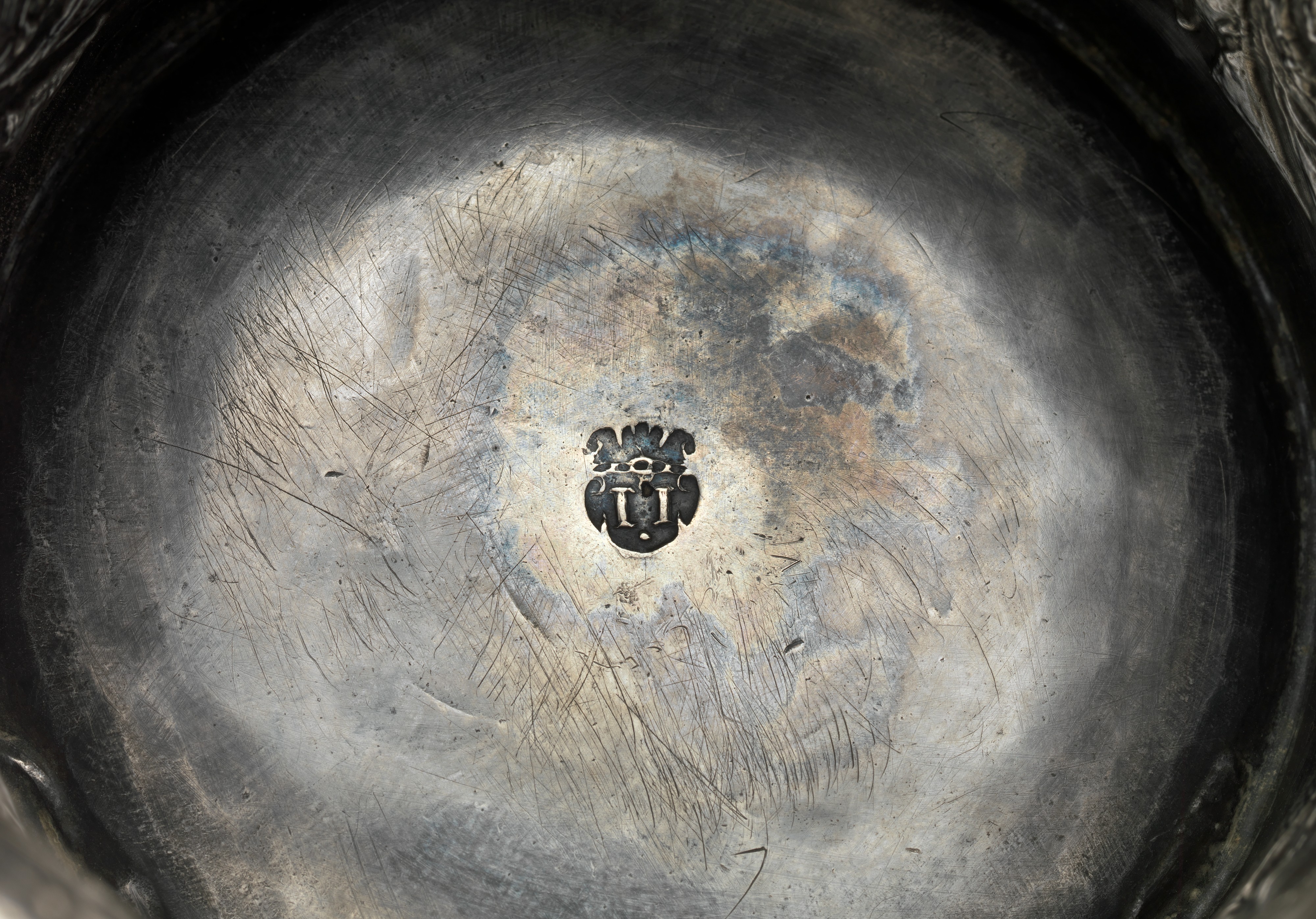Footed beaker
Not on view
This beaker documents the adaptation of styles and motifs created thousands of miles apart. The vessel is covered in a sophisticated ornamental system of dense scrollwork with abundant fruit clusters, and suspended baldachins—the ultimate symbol of royal or ecclesiastical power–surmount the three oval reserves. The three figures engraved in separate ovals represent the theological virtues Faith, Hope, and Charity. They derive from prints by Jacob Matham (Dutch, 1571–1631), who engraved drawings by Henrick Goltzius (Dutch, 1558–1617).
Literature
Tihamér Gyárfás. A brassai ötvösség története. Brassó, 1912, p. 103, no. 148.
Gold Boxes, Objects of Vertu and European Silver. Sale cat., Sotheby’s, London, July 6, 1981, p. 42, no. 161.
Judit H. Kolba. Hungarian Silver: The Nicolas M. Salgo Collection. London, 1996, p. 71, no. 49.
References
A beaker by the same maker was sold at auction by Dr. Fischer Kunstauktionen in Heilbronn.
Elemér Kőszeghy. Magyarországi ötvösjegyek a középkortól 1867-ig / Merkzeichen der Goldschmiede Ungarns vom Mittelalter bis 1867. Budapest, 1936, no. 193 [maker’s mark].
[Wolfram Koeppe 2015]
Due to rights restrictions, this image cannot be enlarged, viewed at full screen, or downloaded.
This artwork is meant to be viewed from right to left. Scroll left to view more.



